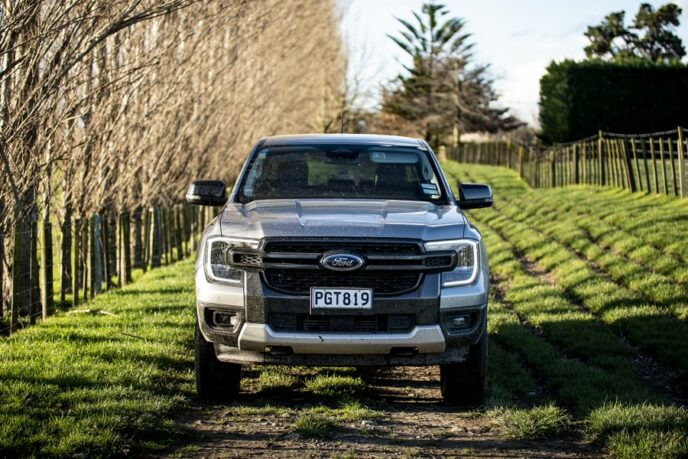
Ford New Zealand managing director Simon Rutherford has said that he expects the brand will “probably” have to lift the pricing of its hugely popular Ranger as the government’s Clean Car Standard legislation becomes more strict heading into 2023.
Speaking at the launch of the next-generation Ranger in Hawke’s Bay, Rutherford said that the Clean Car Standard’s exponentially increasing CO2 emissions targets are set to become “pretty painful” by 2025 and 2026. Particularly for those in the ute segment.
He noted that pricing adjustments are unlikely to be uniform across the range. Rather, they’re most likely to come in the form of “counter balancing” the pricing of its 3.0-litre V6 line-up. The V6 has already been a sales smash, with it and the Raptor making up more than half of the Ranger’s order base.
“The challenge for us is pulling the appropriate levers to manage the demand side of the structure,” he said, adding that price rises are likely coming “for us and probably our competitors as they cross the line into 2023”.
The Clean Car Standard is set to force brands to reduce the emissions of their fleets by 40% by 2025, forcing a rate of change that numerous figures across the new and used car industry have said is too rapid for companies to keep up with without passing price rises onto consumers.
In 2023, the standard’s limit will lowered to 139g of carbon per kilometre travelled. It will then sink further to 128g in 2024, before dropping significantly to 105g in 2025. Firms that offer vehicles with emissions well over the target will need to balance them by offering low-emission options that improve the average of their fleet.
The managing director believes that there could be other consequences as the scheme morphs, including a disruption of competition, as well as the potential for consumers who require utes for their jobs to become “short changed on the capabilities they need to do their jobs”.
He also believes that consumer knowledge of the scheme and its potential impacts is currently lacking. “Whilst this year I think consumers are aware of the feebate, they’re not aware of the [Clean Car] standard at all. There’s very little talk about it,” he said.
“Even our dealers, […] we ask them ‘do customers understand what the standard is, do they understand that it may have implications in the market’ just like the discount structure has. [But] nobody’s really aware of it. And I don’t think the government will want to talk about it particularly.”
Rutherford noted that the brand has already seen a shift in some buyer trends following the introduction of the Clean Car Discount.
The changes have had minimal impact on habits among private buyers but more so on the company buyer, Rutherford said. “Those companies are signing up to their own commitments, and they’re having their own close look at ‘how do I rebalance?’.”
In spite of the gloom around the future of the ute segment in the shadow of the government’s Clean Car Standard future, Rutherford remains defiant. He stated that the brand will become compliant. “We are going for compliance; we will find a way there”.
“The balance is what else is coming. We know that. The position that we’re taking is that with our current plan, we will be carrying credits. I think that that’s the position we want to be moving into, and we’re serious about our compliance position,” he added.
Said ‘credit’ is set to come from the blue oval’s SUV line-up, which it believes will shoulder more of the brand’s responsibility in the coming years; particularly the Escape, Mustang Mach-E, and Everest.
Rutherford expects Ranger sales to ‘reduce proportionally’ from representing 75% of the brand’s local sales to 60%, with the aforementioned models (as well as other new electrified models) set to pick up the slack.
He also noted some of the Ranger’s emissions wins. These include the 3.0-litre V6 having superior emissions figures relative to its spiritual forefather; the five-cylinder 3.2. The brand’s 2.0-litre bi-turbo has also been further refined to be more fuel efficient.








